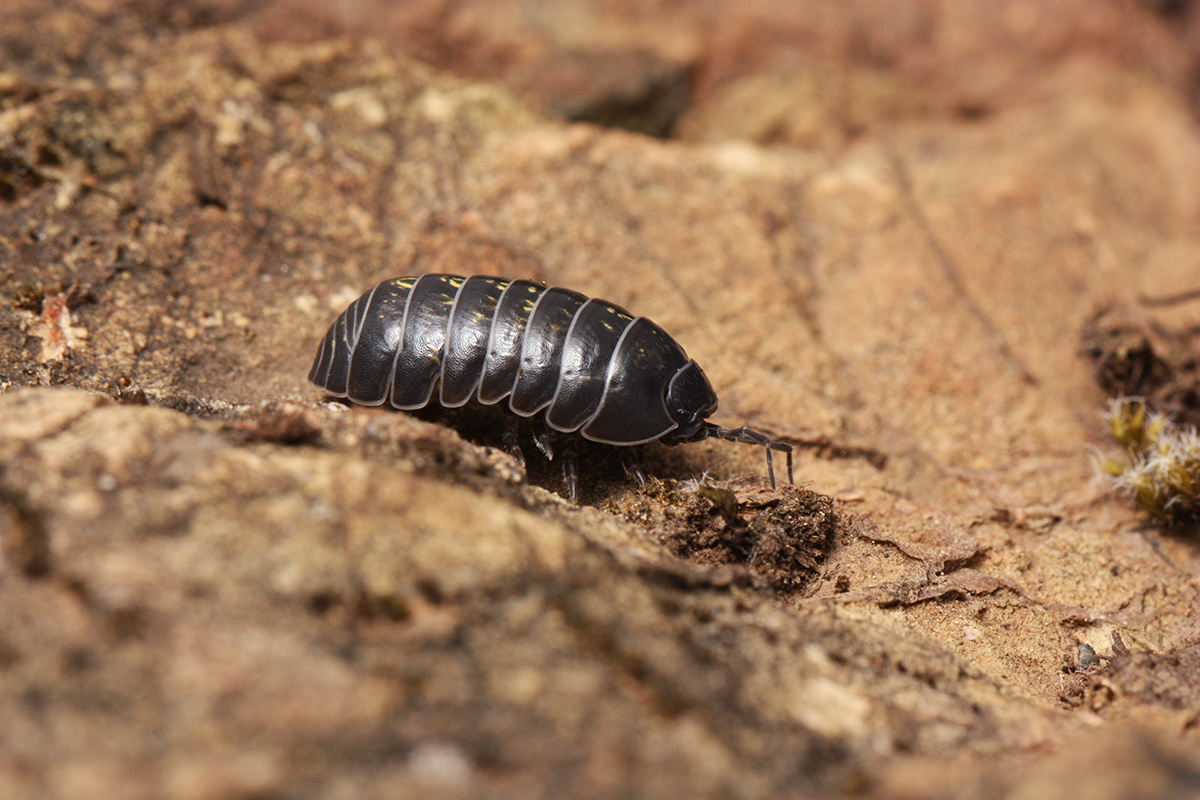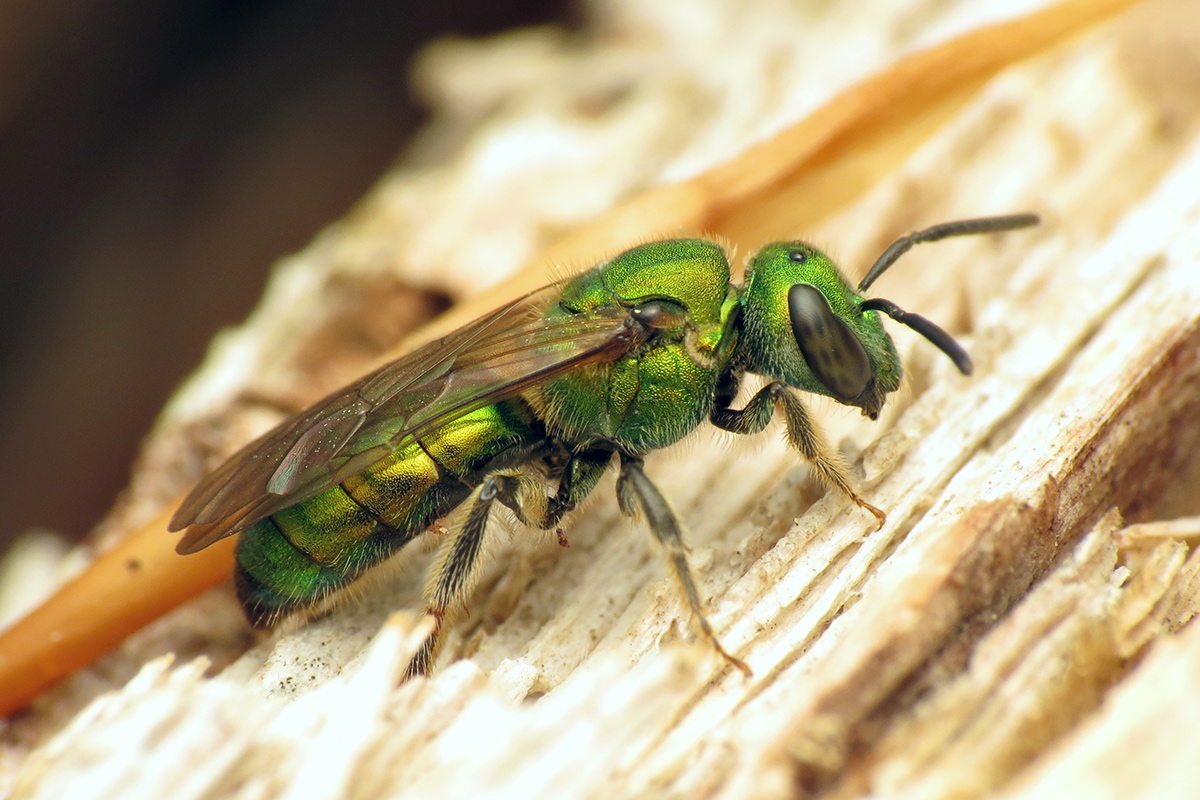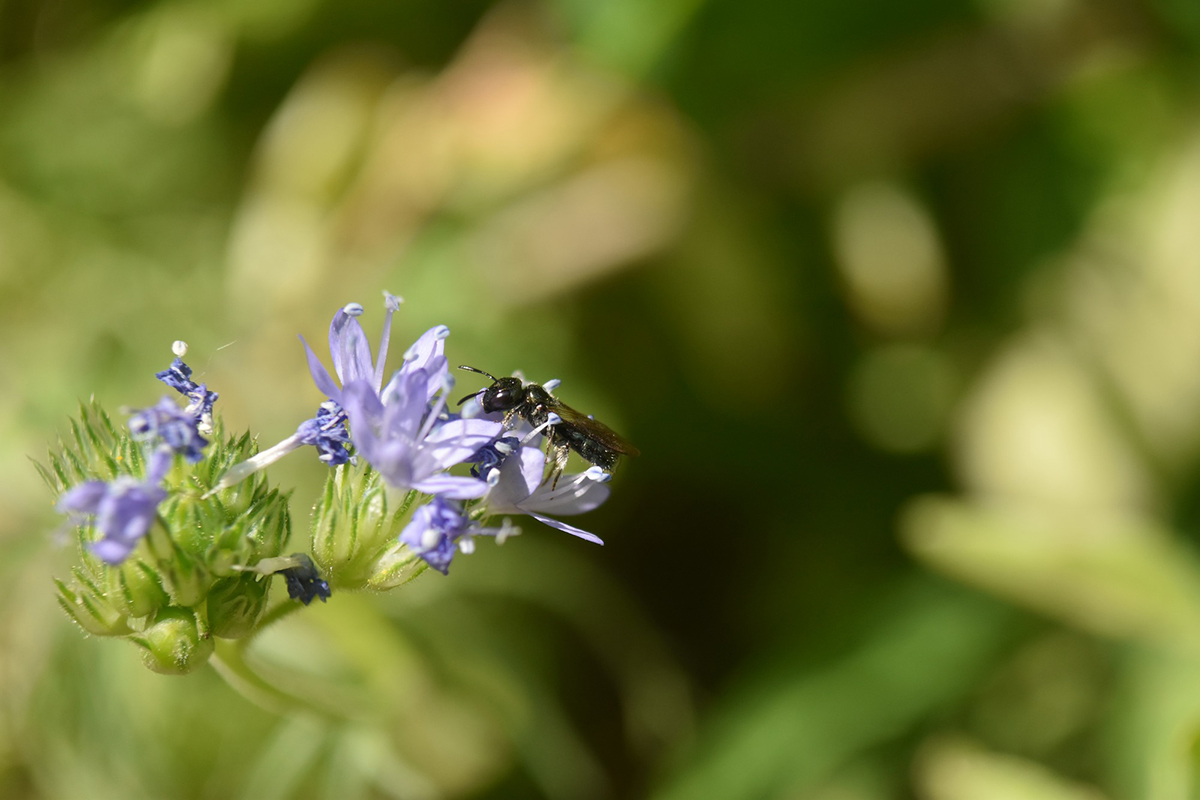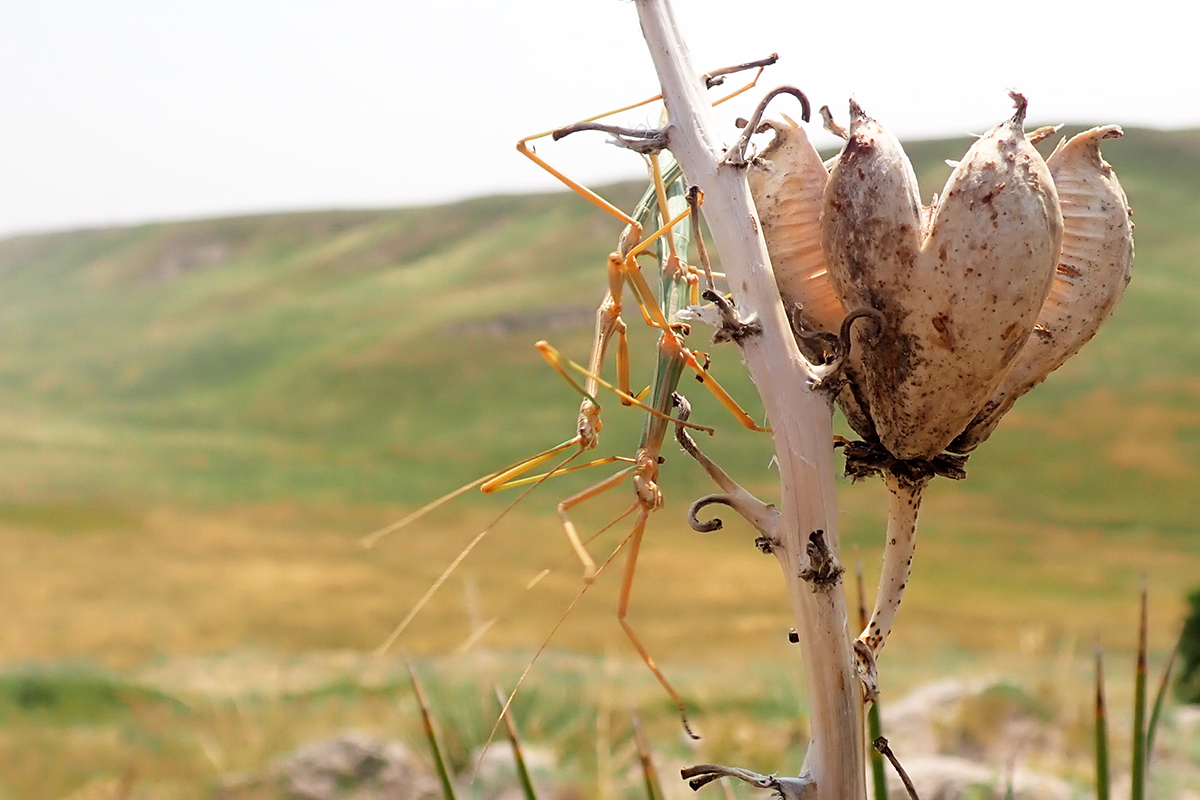When the temperature starts to drop and flowers close up shop for the winter, it’s normal to wonder where all the little creatures have gone. For most invertebrates, the answer is that they’re still right next door.
Your garden’s wild residents benefit immensely when you practice good neighbor relations, leaving things a little messy and wild with a variety of leaves, hollow stems, brush piles or dead wood, soil, and flower heads available for winter shelter. That’s not to say you can’t do any tidying up – we have tips for thoughtful autumn cleanup that still leaves space for nature.
By simply doing fewer chores in the fall (and say, enjoying a steaming cup of spiced cider instead, courtesy of pollinators), your garden will reap the rewards of abundant pollination, natural pest control, and food for visiting birds and wildlife next spring. Below, we’ve shared just a few of the fascinating invertebrates who may call your leaf litter and garden debris home.
Yellow spotted millipede, Harpaphe haydeniana
Found in moist forests along the Pacific coast, the yellow spotted millipede has an indispensable connection to the forest floor. The juveniles eat humus. Not hummus, the tasty bean dip, but humus, the rich organic layer of decayed plants and animal matter at the surface of the forest floor. As adults, these millipedes have few foes thanks to their top-rate defense system, spraying hydrogen cyanide when threatened.
Xerces Director Scott Black says, “I did not see any until I took out most of the lawn and added diverse plantings and messiness. Now I see them somewhat regularly, but mostly in spring and fall.”

Goatweed leafwing butterfly, Anaea andria
Have you ever seen a goatweed leafwing butterfly? It takes a sharp eye to spot these masters of disguise amongst decaying leaves. With a proboscis too short to reach most flowers, the adults feed on sap flows, decaying fruits, and dung.
Pollinator Ecologist Ray Moranz first noticed that leafwings needed leaf litter during a prescribed burn on his farm, as the butterflies flew away ahead of the flames. To avoid harming the leafwings and other fire-sensitive species, Ray only burns a third of the farm’s acreage at a time, which allows both safe overwintering habitat and a booming bloom of new flowers come spring.
“It not only needs leaves, it looks like a leaf,” says Ray. “It is very easy to walk right past one without noticing it when it is resting on leaf litter.”
Common pill bug, Armadillidium vulgare
More commonly known as roly-polies, pill bugs are every curious child’s first love. These tiny gray tanks were introduced to North America from Europe and are isopods, a terrestrial crustacean. While not native, they are broadly distributed in the more humid conditions under leaves and trees, where they eat detritus. They also sometimes take a chomp at the roots and stems of wanted seedlings in the garden. To prevent pest damage, avoid overwatering and remove any decaying plant material from the area.
“They are soil creators as they work to eat decaying plant matter, including our fall leaves,” says Melissa Manuel, Xerces’ donor engagement specialist. “And they roll up in a ball. Can’t get any cooler than that.”

Pure gold-green sweat bee, Augochlora pura
One favorite cavity nesting bee is found in the eastern US, Augochlora pura. This sweat bee nests in rotting wood like stumps of trees that have been cut or large logs. Leaving dead wood and stems in the garden makes for a more interesting winterscape and architecture in the garden. Logs and stumps can also be used as borders around a native planting area to add definition to the space.
“Since moving from Oregon to Michigan earlier this year, I have had the pleasure of seeing these small metallic green (or sometimes gold or rust) colored bees all over Michigan,” says Stefanie Steele, Xerces’ pollinator specialist for urban and small farms.

Carpenter bees, Ceratina spp.
Flowers aren’t the only way to add color to your garden. The right overwintering habitat can encourage some of nature’s most gorgeous metallic bees to make it home. Ceratina species are small, metallic blue-green bees who nest in the pithy stems of plants, such as canes from raspberries and blackberries, or Spiraea and aster stems. These bees often have multiple generations a year, so they are a likely garden visitor spring through summer.
For those looking to bless their gardens with these winged gems, Stefanie Steele has a helpful tip: “Our fact sheet Save the Stems: How to Create Habitat for Stem-Nesting Bees provides a wonderful graphic on to cut hollow or pithy stem perennial flower stalks to provide habitat for these bees.”

Stick insects, order Phasmatodea
Endangered Species Conservation Biologist Katie Lamke became enamored with stick insects during her work in western Nebraska last summer. They can grow up to 7 inches long in North America and both adults and eggs are champions of disguise. After mating, the females (disguised as, you know, sticks) drop more than 100 eggs from treetops that free-fall to the ground, where they overwinter in the leaf litter until spring.
But that’s not all. For stick insects that leave their eggs on the leaf litter, the eggs are disguised to look just like seeds. The ruse attracts ants, who take the seeds back to their nests and bury them, where the baby stick insects hatch safely beneath the soil.

Further reading:
- Xerces Society’s Leave the Leaves webpage
- Xerces Society’s Nesting & Overwintering Habitat fact sheet
- Xerces Society’s How to Create Habitat for Stem-Nesting Bees brochure
Author
Deborah Seiler joined the Xerces Society in 2021 as Director of Communications, bringing over ten years of experience representing environmental and research institutions. She has previously led invasive species campaigns in Wisconsin, coastal science communications with California Sea Grant, and served as CCO of Illinois Extension. Deborah attended University of California-Davis and University of Wisconsin-Madison, where she studied science communications, environmental behavior, and digital media.






